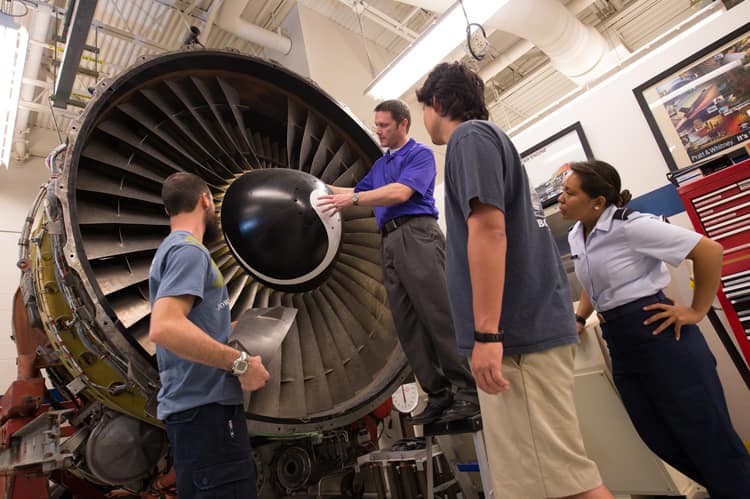The Gas Turbine Laboratory (GTL) at Embry-Riddle supports computational and experimental research in the aero-thermal sciences applied to power and propulsion systems.
Research areas include:
- Turbomachinery aerodynamics
- Thermodynamic modeling
- Gas turbine performance
- Heat transfer and thermal management
- Supercritical fluid dynamics
- Distributed propulsion
Students and research staff at the GTL also have experience working with aerospace corporations and privately owned companies, and assist with Intellectual Property development.
Equipment
- Shock tubes
- Cascade rigs
- High-response pressure transducers (PCB)
- Temperature and pressure sensitive paint system
- Pitot tubes
- Thermocouple arrays
- Various data collection equipment, such as DAQ boards and oscilloscopes
- Temperature/pressure sensitive paint system
- Acrylic internal channels: Pin Fin, Impingement, Ribbed, Smooth
- External impingement nozzle (variable angle and height; local and average data)
- High-performance workstations
- ERAU COE High-Performance Computer Cluster access
- Experience and access to various commercial software: Star-CCM+, Optimate+, ANSYS CFX, COMSOL, MATLAB, PYTHON, NPSS and proprietary codes
In addition, the GTL is home to several engines used for instruction of propulsion engineering students: GE TF-34, Garrett TPF 351-20, P&W JT8-15D and GE CF6-6.
Lab Information
Location: LB 177
Lab Director: Mark Ricklick
Research Groups: Ricklick Research Group; Propulsion and Turbomachinery Performance Group
Contact Us: To speak to someone about this lab or any of our facilities, call us at 386-226-6100 or 800-862-2416, or email DaytonaBeach@erau.edu.

